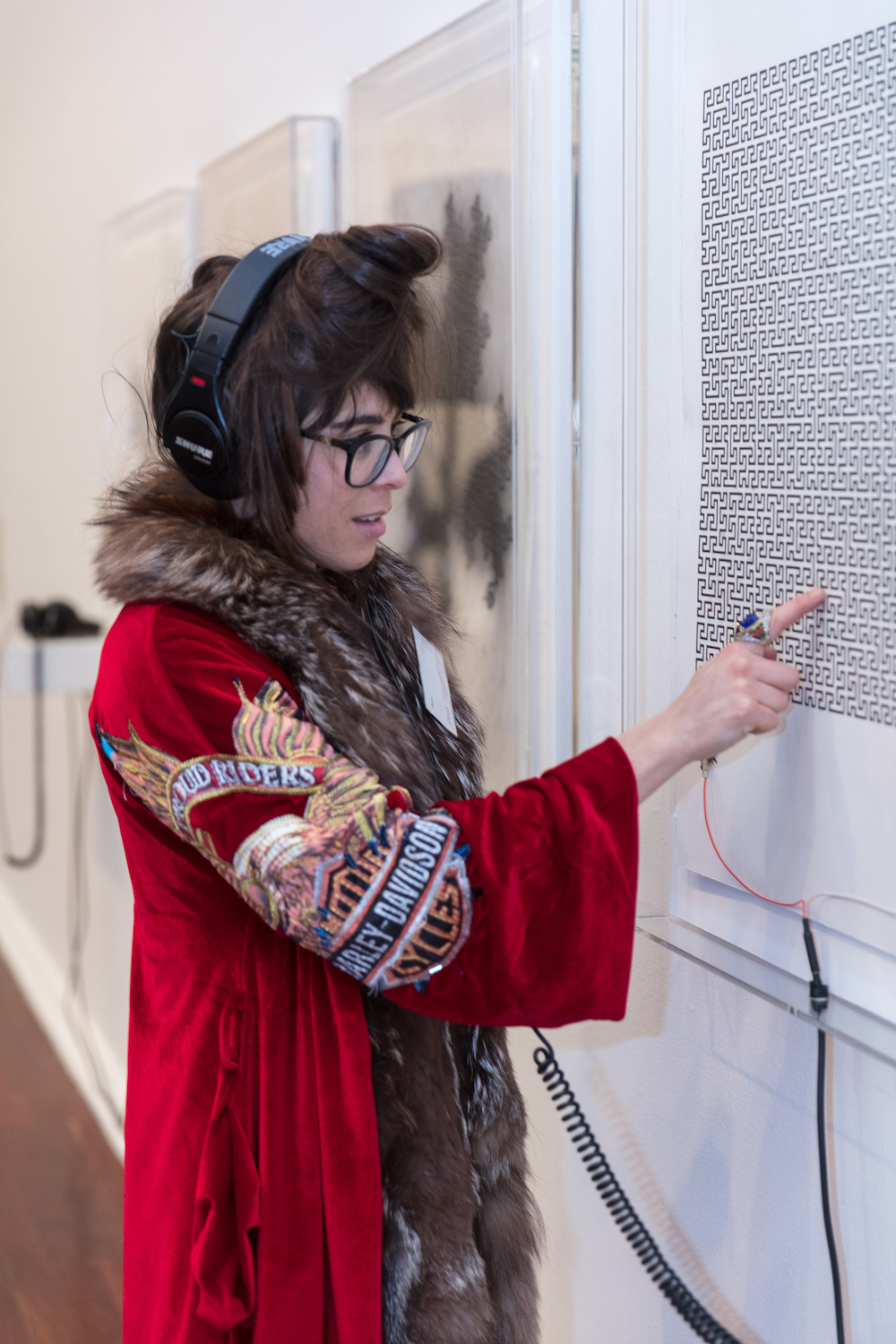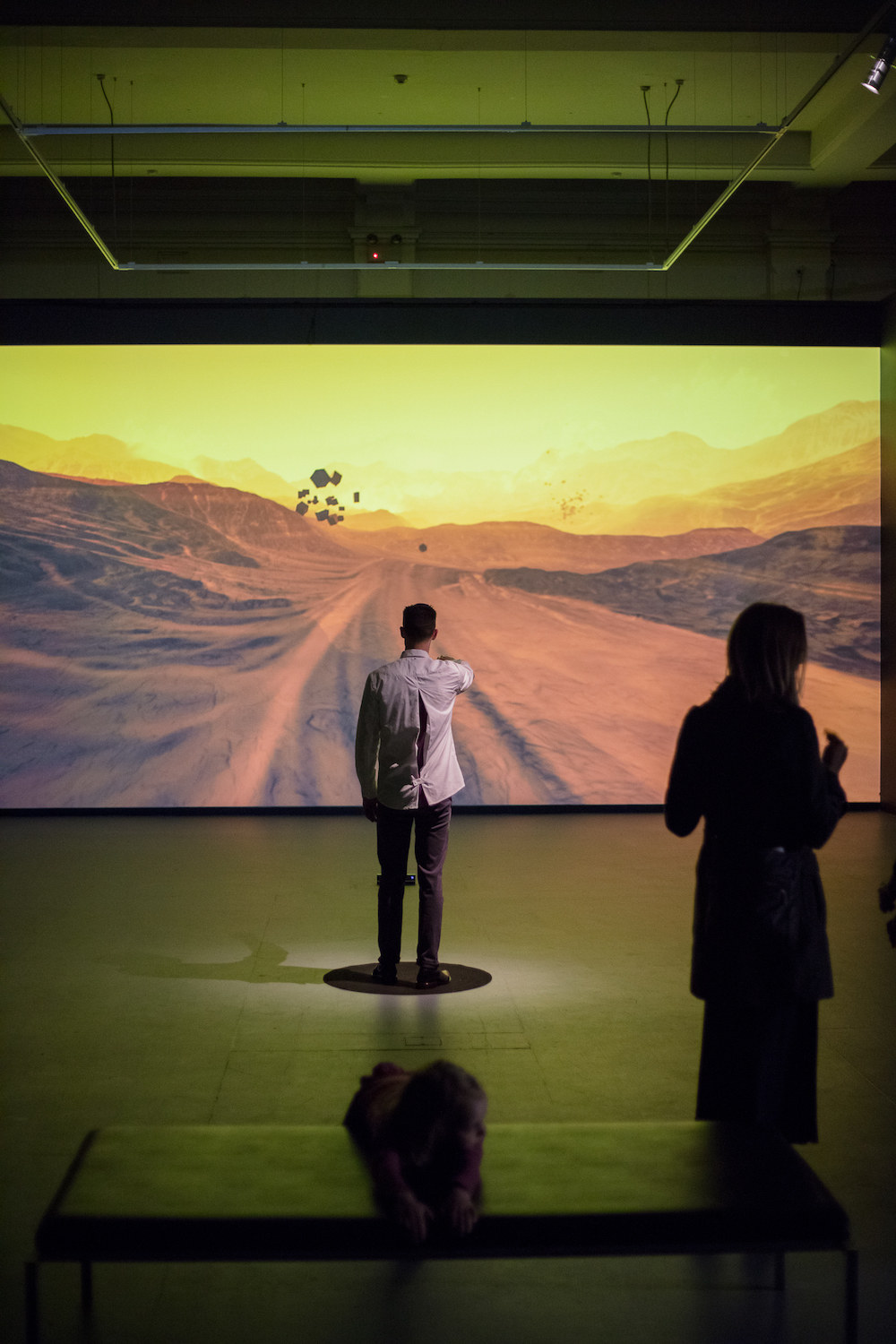Review: ‘Energies: Haines & Hinterding’ ·
Perth Institute of Contemporary Art, 1 September ·
Review by Jenny Scott ·
The intangible energies surrounding us – radio waves, television signals, and electrical fields – become visible and palpable within the multidisciplinary works of David Haines and Joyce Hinterding in “Energies: Haines & Hinterding”. A touring exhibition from the Museum of Contemporary Art Australia, “Energies” is the first museum survey of Haines and Hinterding’s 15 years of artistic collaborations.

This exhibition aims to engage and extend the senses, with wall labels prompting visitors to listen, smell, gesture, or (gently) touch to fully experience many of the works on display. Moving beyond purely visual appreciation, Hinterding’s conductive graphite drawings offer the additional potential to be touched and heard. When wearing the supplied headphones and tracing the lines with a finger, visitors are in control of their sensory experience of these works – and can even try to “play” the drawings like musical instruments.
Throughout “Energies”, Haines and Hinterding illustrate scientific models and their data in poetic and personable ways. The artists seem determined to draw our attention to the underlying processes and unseen physical phenomena in our lives, like the television signals transmitted into the gallery space through the antennae of Purple Rain (2004). In another room, Earthstar (2008) allows visitors to stare directly at a detailed projection of the sun, listen to a live broadcast of its electromagnetic radiations, and sniff two (speculative) examples of its odours. This multisensory portrait of the sun emphasises its tangible nature; encouraging us to think about, and feel amazed by, the omnipresent star that we depend upon but rarely consider.
Many of the works in “Energies” originated from what curator Anna Davis terms “informal experiments” conducted by the artists, who infuse their scientific aesthetic with an occult vibe. The boundaries between the empirical and the supernatural become playfully blurred; seemingly authoritative machines are revealed to be pseudoscientific “cloudbuster” devices, while plant specimens are photographed using a process once believed to prove the existence of the paranormal.

Be sure to head upstairs to experience, or watch others navigate, the virtual reality of Geology (2015). This massive interactive installation fills PICA’s West End Gallery, and was inspired by a visit to the Christchurch Art Gallery Te Puna o Waiwhetu which was damaged by earthquakes in 2011. Standing on the centre circle in front of a motion sensor, individual visitors can move their arms to navigate through a virtual mountainous landscape projected onto the back wall. Under the spotlight each participant becomes a public “player” of the work, and others are encouraged to watch their attempts at learning the logic of the landscape and the rules of the “game”. Visitors are free to choose their level of engagement; they can remain an observer, appreciate simply floating through the unique large-scale VR landscape, or embrace the gamified nature of the world and actively quest to uncover three different “levels”.
“Energies” is an exhibition appealing equally to those with more knowledge of science than contemporary art, and vice versa, while those less inclined to participation can enjoy watching others navigate the sonic and olfactory experiences.
Energies: Haines & Hinterding runs until 29 October 2017.
Top photo: Cam Campbell
Like what you're reading? Support Seesaw.






